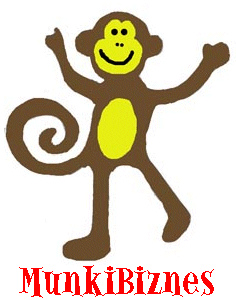end /end/ noun
1. the point where something ceases to exist
"a world without end"
 |
The end of |
|---|---|
| The end of the World of the News as we know it. |
Technology: IoT ...
Everything you need to know about the Internet of Things
excerpted from ZDnet "Everything you need to know about the Internet of Things right now"
The Internet of Things, or IoT, refers to the billions of physical devices around the world that are now connected to the internet, collecting and sharing data. Thanks to cheap processors and wireless networks, it's possible to turn anything, from a pill to an aeroplane, into part of the IoT. This adds a level of digital intelligence to devices that would be otherwise dumb, enabling them to communicate without a human being involved, and merging the digital and physical worlds.
Pretty much any physical object can be transformed into an IoT device if it can be connected to the internet and controlled that way.
A lightbulb that can be switched on using a smartphone app is an IoT device, as is a motion sensor or a smart thermostat in your office or a connected streetlight. An IoT device could be as fluffy as a child's toy or as serious as a driverless truck, or as complicated as a jet engine that's now filled with thousands of sensors collecting and transmitting data back to make sure it is operating efficiently. At an even bigger scale, "smart cities" projects are filling entire regions with sensors to help us understand and control the environment.
The term IoT is mainly used for devices that aren't historically expected to have an internet connection, but can now communicate with the network, independently of human action. For this reason, a PC isn't generally considered an IoT device and neither is a smartphone -- even though the latter is crammed with sensors. A smartwatch or a fitness band or other wearable device might be counted as an IoT device.
The idea of adding sensors and intelligence to basic objects was discussed throughout the 1980s and 1990s (and there are arguably some much earlier ancestors), but apart from some early projects -- including an internet-connected vending machine -- progress was slow simply because the technology wasn't ready.
Processors that were cheap and power-frugal enough to be all but disposable were required before it became cost-effective to connect up billions of devices. The adoption of RFID tags -- low-power chips that can communicate wirelessly -- solved some of this issue, along with the increasing availability of broadband internet and cellular and wireless networking. The adoption of IPv6 -- which, among other things, should provide enough IP addresses for every device the world (or even the galaxy) is ever likely to need -- was also a necessary step for the IoT to scale. Kevin Ashton coined the phrase 'Internet of Things' in 1999, although it took at least another decade for the technology to catch up with the vision.
"The IoT integrates the interconnectedness of human culture -- our 'things' -- with the interconnectedness of our digital information system -- 'the internet.' That's the IoT," Ashton told ZDNet.
Adding RFID tags to expensive pieces of equipment to help track their location was one of the first IoT applications. But since then, the cost of adding sensors and an internet connection to objects has continued to fall, and experts predict that this basic functionality could one day cost as little as 10 cents, making it possible to connect nearly everything to the internet.
The IoT was initially most interesting to business and manufacturing, where its application is sometimes known as machine-to-machine (M2M), but the emphasis is now on filling our homes and offices with smart devices, transforming it into something that's relevant to almost everyone. Early suggestions for naming internet-connected devices included 'blogjects' (objects that blog and record data about themselves to the internet), ubiquitous computing (or 'ubicomp'), invisible computing, and pervasive computing. However, it was Internet of Things and IoT that stuck.
The Internet of Things is big and getting bigger -- there are already more connected things than people in the world. Analyst Gartner calculates that around 8.4 billion IoT devices were in use in 2017, up 31 percent from 2016, and this will likely reach 20.4 billion by 2020. Total spending on IoT endpoints and services will reach almost $2tn in 2017, with two-thirds of those devices found in China, North America and Western Europe, said Gartner.
Out of that 8.4 billion devices, more than half will be consumer products like smart TVs and smart speakers. The most-used enterprise IoT devices will be smart electric meters and commercial security cameras, according to Gartner.
